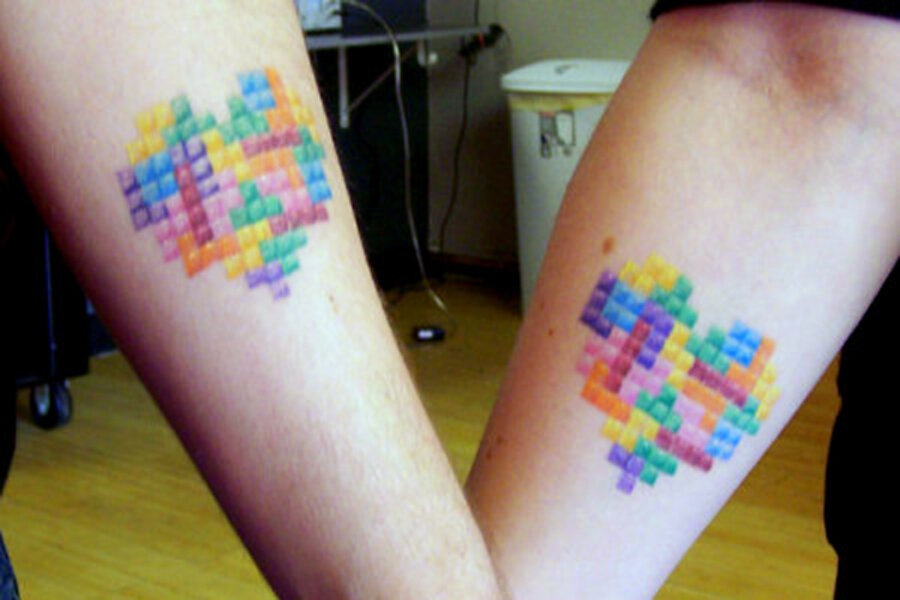How Tetris got under our cultural skin over the past 30 years
Loading...
As Tetris, the iconic tile-matching game, turns 30, culture mavens may want to take note of the many ways the colorful geometric tiles have exited the game and settled deep under our cultural skin in everything from ice-cube molds to lovers’ tattoos.
On Friday, Twitter users shared their love of this game with #WeAllFitTogether, a hashtag that may be a clue as to why Tetris has filtered-down from the game world to fit so snugly into our culture, bridging generations.
Perhaps the common denominator is, as Tetris creator Alexey Pajitnov points out in a video statement on Tetris.com, that his game is designed to “give you the satisfaction of making order out of chaos.”
In the chaotic world in which we live, people may indeed draw comfort from having Tetris in many forms beyond the basic game.
Tetris has evolved into an icon that people can eat, drink, sleep on, wear, dance to, and even ink into their skin.
Ray Capps, artist at Lucid Ink in Portland, Ore., has become known online among gamers as the person who tattooed a couple with matching Tetris hearts before their wedding.
“[The two people in] that couple are actually avid gamers and they had just started dating three years ago when they came in wanting those Tetris tattoos,” says Brigett Price, co-owner of Lucid Ink. “They’re married now. They fit together like those Tetris cubes.”
A quick search of Tetris tattoos shows their growing popularity across generational lines as a romantic expression of people fitting together perfectly.
In music, British singer Lady Sovereign used the game to illustrate the fact that she doesn’t fit into mainstream culture, which she represented in her Tetris-themed video “Love Me or Hate Me” released back in 2006.
Today, you can buy a Tetris ice-cube tray from Paladone Products or a Tetris sandwich cutter on Amazon.
There is a vast array of wearable Tetris product, including print dresses, bathing suits, leggings, backpacks, and jewelry either emblazoned with the colorful patterns or that interlock in some clever way.
To celebrate the birth of this piece of our culture, the Drexel University game department wired up the north and south faces of the Cira Centre in Philadelphia, and allowed people to play the tile-matching puzzle game on the sides of the building.
According to CNN, the latest numbers from The Tetris Company show that Tetris has seen more than 425 million paid downloads for mobile devices to date.
However, it’s fair to say the impact on our culture is incalculable.








